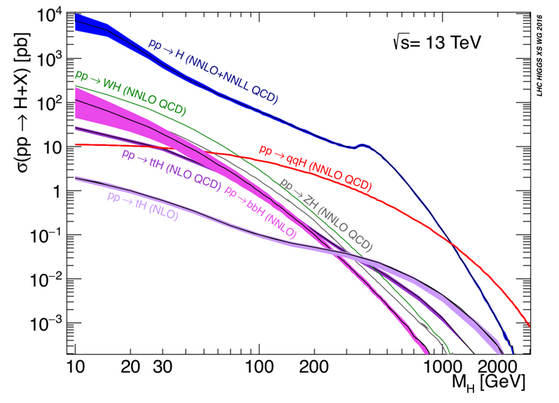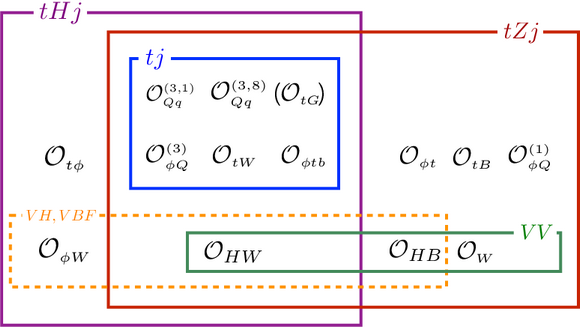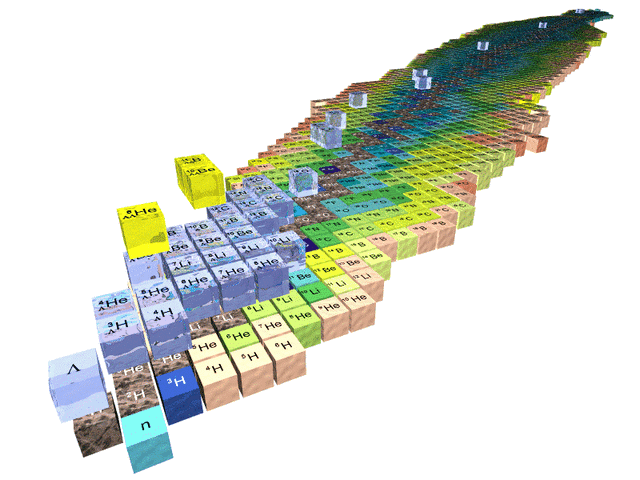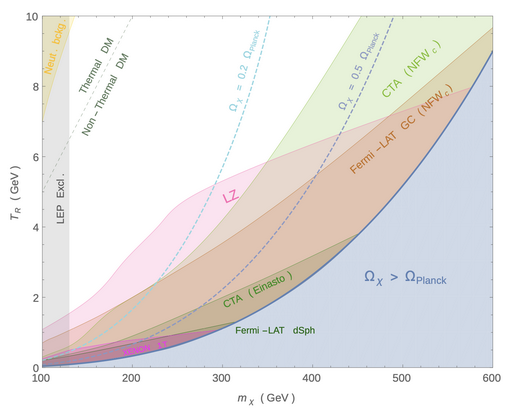Phenomenology of fundamental interactions
Our current understanding of the fundamental interactions at high energies is encapsulated in the Standard Model, which includes strong and electroweak interactions, both in the perturbative and non-perturbative (e.g., hadronic and nuclear physics) regimes. A wide set of experiments based on the acceleration of beams of particles or nuclei to high energy or at high intensity, such as those running at the CERN, Fermilab, Brookhaven laboratories and based on observations on earth or in space, have largely confirmed the predictions of the Standard Model. Nevertheless many questions remain unanswered.
Among these, the dynamics of strong and nuclear interactions at high density and temperatures is the subject of many investigations. Another leading topic is the search for new physics in the sectors of the Standard Model that are still not very much explored, i.e. the Higgs potential and its couplings to first and second fermion generation, the neutrino masses and mixings, or measured. In parallel, many open questions, such as the nature of Dark Matter or the origin of the matter/anti-matter asymmetry are considered. In general, we are interested in all measurements and searches that can shed light on the existence of new physics beyond the electroweak scale with all the implications that these can have on the origin, history and evolution of the Universe.
Details of the activities in Phenomenology in the web site of the theory group.

Research activities
Precision physics at colliders
The final goal of precision physics is to detect possible deviations from the predictions of the Standard Model (SM) of elementary particles, which would be an indirect sign of physics beyond the SM. In this context, our interest focuses on precise predictions for physical observables in hard-scattering processes at present and future colliders. Indeed only via accurate and reliable theoretical predictions it is possible to correctly identify possible tiny discrepancies with experimental measurements. In order to improve the state-of-the-art of precision physics, we work on the calculation of radiative corrections for high-energy processes, for the strong interactions (QCD) at NNLO and beyond and electroweak (EW) corrections at one loop and their combination.

Effective field theories
The existence of the physics beyond the Standard Model can be investigated either with a top-down model-building-inspired approach focused on the search of new resonances, or with a bottom-up method that looks for new interactions among the known particles. In the second case, the effective field theory method provides a consistent and systematic framework to the interpretation of the experimental results.
In this context, we work on providing accurate predictions for collider observables in the SMEFT framework relevant for Higgs, EW, and top quark phenomenology, and then extracting constraints on new physics properties by performing global fits to precision data. Following a top-down approach, we study the low-energy consequences of specific BSM scenarios and we consider EFT at the TeV scales which can be characterised by specific symmetries connected to UV complete theories or by the presence of closed fixed-points in the theory space.
Neutrino theory and phenomenology
The discovery of neutrino oscillations in 1998 implies that neutrinos have mass and mix, contrary to the predictions of the Standard Model. A precise picture of neutrino properties have been provided by a wealth of experiments. Some open questions remain, namely the value of neutrino masses, the violation of the CP symmetry in the leptonic sector, the precise values of the mixing parameters and the test of the standard 3-neutrino paradigm. The questions are crucial to understand the origin of neutrino masses and mixing in extensions of the Standard Model.
We study neutrino properties assessing the physics reach of current and future experiments in their determination, with emphasis on short, e.g. MicroBooNE, and long, e.g. DUNE, baseline neutrino oscillation experiments and neutrino less double beta decay, and we exploit the neutrino portal to hunt for hidden sectors. On the theoretical side, the origin of neutrino masses calls for a new energy scale: our approach is to consider the broadest range going from low scale see-saw models to the GUT scale and to identify the phenomenological signatures of such models, e.g. leptogenesis, GeV-scale heavy neutral leptons. From an astroparticle physics perspective, we exploit the key role neutrinos had in the evolution of the Universe to pin down their properties, in particular the precise measurement of neutrino masses, and their possible connection to dark matter.
Scattering amplitudes
We develop cutting-edge methods for the study and calculation of loop integrals and scattering amplitudes in quantum field theory. These rely on advanced mathematical and computational techniques such as modern methods for linear reduction, differential equations, the study of special functions, finite fields and functional reconstruction techniques. We combine these with approaches that exploit important physical and mathematical properties of amplitudes and loop integrals, such as unitarity, integrand reduction and physical projectors. These methods can be applied to the study of a broad range of physical problems, such as interactions of the Standard Model, its extensions, gravity and classical observables. In particular, in hadronic processes we study hard and semi-hard processes in the Regge regime, which allows to organise the contributions through BKFL-type of resummations and to explore properties of QCD in extreme situations, such as those characterized by high partonic densities.

Nuclear interactions
Our research activity is focused on the strong interactions, which are responsible of the internal structure of the protons and neutrons. In particular, we study i) elastic reactions between hadrons on finite nuclei starting from a many-body microscopic approach; ii) elastic and quasi-elastic electrons as a method to measure the distribution of protons and neutrons in nuclear systems; iii) mean-field approaches to the description of the nuclear structure; iv) nuclear superconductivity.

Implications of string theory for particle physics
The low-energy limit of string theory gives rise to ordinary gauge theories in a supergravity framework with the presence of extra dimensions and branes. Our goal is to reproduce Standard Model physics and to provide new ways to solve its problems. In particolar we study supersymmetry breaking mechanisms and spectra of supersymmetric particles, moduli phenomenology, non-thermal scenarios for dark matter and baryogenesis, hidden sector physics, axions and new gauge bosons.
National and international projects and collaborations
Our research activities are also supported by the INFN initiatives, QFT@COLLIDERS, MONSTRE (ex MANYBODY), ST&FI. Several collaborations with national (Milano, Torino, Roma, Genova, Pavia) and international institutions [Brookhaven (US), TRIUMF (CA), UCLouvain (B), CERN (CH), NIKHEF (NL), IHEP (China), Paris (F), Heidelberg (D), DESY (D), Durham (UK), Cambridge (UK), Lund (S)] are active.
DIFA staff members
Michele Cicoli
Full Professor
Paolo Finelli
Associate Professor
Fabio Maltoni
Full Professor
Silvia Pascoli
Full Professor
Tiziano Peraro
Associate Professor
Francisco Manuel Soares Verissimo Gil Pedro
Associate Professor
DIFA post-doc and PhD students
Francesco Comberiati
Teaching tutor
INFN Members
-
Gianluigi Alberghi
-
Davide Pagani